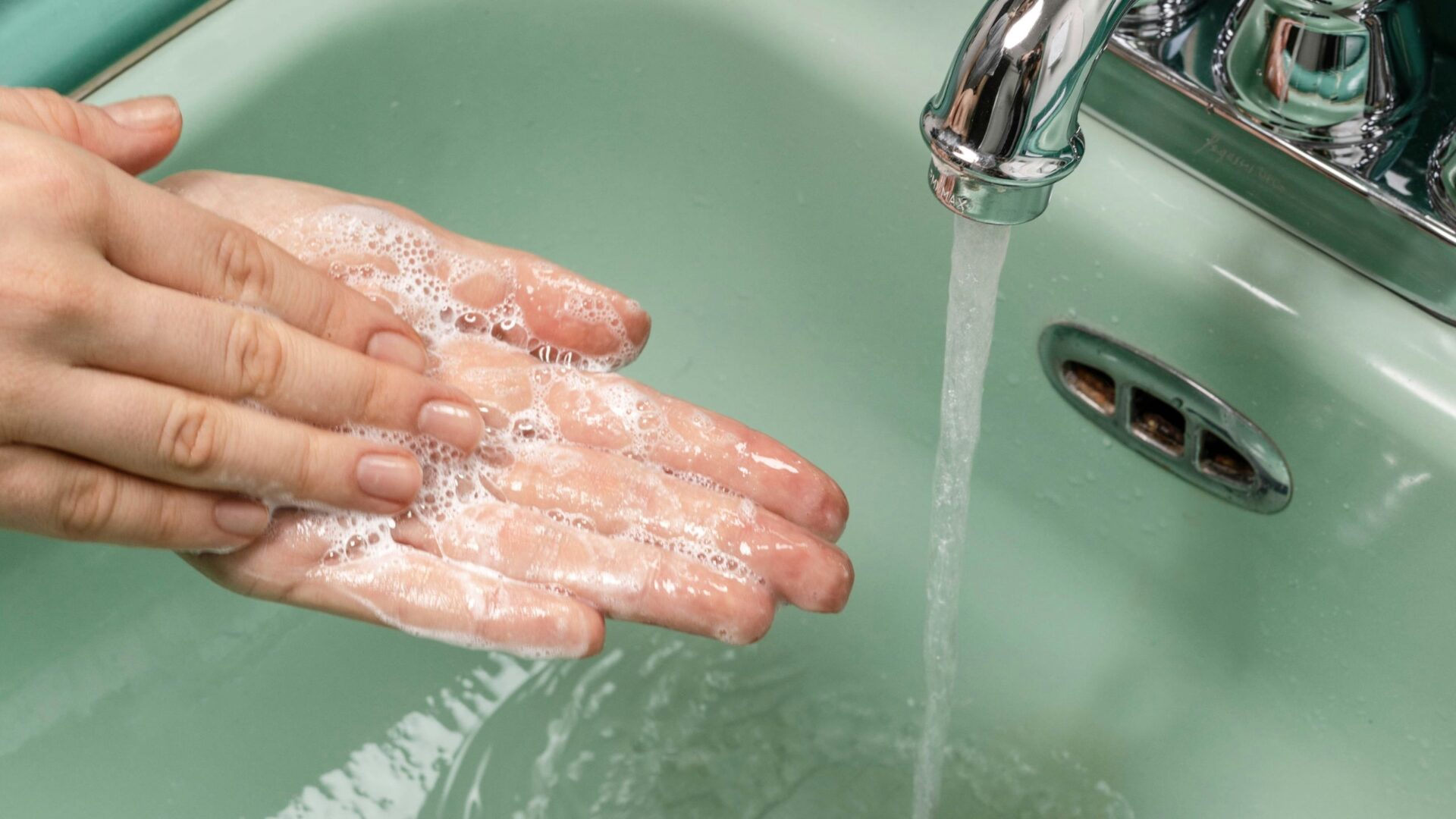Mysophobia: The Fear of Contamination, or fear of germs and viruses
Mysophobia, or the fear of germs, dirt, or contamination, is an anxiety disorder that manifests as an overwhelming dread of uncleanliness or germs. Those suffering from this condition experience intense emotional and physical responses to situations or objects they perceive as contaminated, leading them to go to extreme lengths to avoid perceived contamination. While some degree of cleanliness and concern about hygiene is normal, for those with mysophobia, this fear becomes all-consuming, impacting daily life and relationships.
There was a woman suffering from mysophobia. Overcome by an extreme fear of germs, she would spend hours in the shower, scrubbing her skin to the point of causing it to bleed. She refused to dine in public places and would never put a fork that someone else had used into her mouth, opting instead for disposable plastic utensils. Her fear extended beyond public spaces; she even refused to kiss her husband for fear of being contaminated by his mouth germs. The aversion didn’t stop at kissing—she refused any form of intimacy altogether.
Extreme Cases of Mysophobia
In extreme cases, mysophobia can incapacitate a person’s ability to function normally. Individuals may go to the point of sterilizing their surroundings incessantly, avoiding contact with others, or even refusing to leave their homes altogether due to the fear of encountering germs. Some individuals with mysophobia may wear gloves, face masks, or engage in repetitive cleaning rituals to avoid contamination.
An extreme case in history involves a well-known individual, Howard Hughes, a famous American business magnate, investor, and aviator. Toward the end of his life, Hughes’ mysophobia grew so severe that it affected his ability to perform daily tasks, including his interactions with others and even his business dealings. His obsession with cleanliness and avoidance of germs contributed significantly to his reclusive lifestyle.
A young college student, most likely as a result of sexual abuse, contracted severe sexually transmitted diseases that left visible marks on her skin and face. The visible effects of her condition became a public source of humiliation, and the scars on her face, caused by treatment, contributed to her developing mysophobia. She never dated anyone again and became afraid even of simple gestures like a handshake. The idea of using public bathrooms or swimming pools terrified her. She refused to wash dishes, avoided vacuuming, and insisted that her bed sheets always be new—never just cleaned, but brand new. Her fear of skin germs manipulated her to use bleach on her skin regularly which led to severe burns on her skin. These burns she wrongly attributed to germs, and that led to a usage of more bleach.
Pop Cases of Mysophobia
While it is difficult to find direct, publicly available quotes from individuals who have openly discussed suffering from mysophobia due to privacy concerns, there are some well-known examples from literature and interviews that shed light on how patients describe their struggles with the disorder. Below are some generalizations based on the reported experiences of people with mysophobia, or similar obsessive-compulsive behaviors related to contamination fears:
- Howard Hughes (American business magnate and aviator):
Hughes, who reportedly suffered from extreme mysophobia in the later years of his life, was known to have an intense fear of germs. According to some biographers and documentaries, Hughes took elaborate precautions to avoid contamination, such as staying in darkened rooms, using Kleenex to touch objects, and avoiding human contact. One of the many documented quotes about Hughes’ condition is:
“I can’t touch that, it’s dirty. I’m afraid to even breathe the air.”
This illustrates the extreme fear and avoidance that comes with mysophobia, especially when it reaches such levels of distress. - A fictional character from Sylvia Plath’s The Bell Jar (Esther Greenwood):
While fictional, Esther Greenwood’s struggles with mental health in The Bell Jar offer a window into the obsessive thoughts that can accompany mysophobia. At one point, Esther describes her fear of contamination, particularly when she feels the pressure of social expectations. She says:
“I felt like I was drowning in a sea of germs and filth, and I couldn’t escape. My hands would never feel clean enough.”
This expression captures the overwhelming feeling of contamination and the inability to escape it, which is characteristic of mysophobia. - An anonymous interview with a patient in a psychological study:
Many individuals suffering from mysophobia might express their experience in ways that reflect anxiety, obsessive rituals, and avoidance behaviors. One patient in a psychological interview (described in academic studies) shared:
“Every time I touch a doorknob or sit down in a public place, I start panicking. I think about all the germs around me, and I have to wash my hands multiple times, or else I feel like I’m going to get sick.”
This kind of distress, where the fear of contamination leads to compulsive behaviors, is common among individuals struggling with mysophobia.
These quotes, though not all from well-known figures, offer an insight into how individuals with mysophobia may express their internal struggles with contamination fears. It’s important to note that many people with this condition don’t necessarily speak out publicly about it due to the stigmatization that often accompanies mental health issues, especially anxiety-related disorders.
Prominent Researchers in the Field
Mysophobia is not a new topic in the world of psychology. Many psychologists have contributed significantly to the study of this disorder, particularly those exploring obsessive-compulsive disorders (OCD) and anxiety disorders. A few notable figures include:
- Sigmund Freud: Freud, the father of psychoanalysis, was one of the first to examine the link between anxiety and irrational fears, including those centered around cleanliness.
- Erik Erikson: Known for his work on the stages of psychosocial development, Erikson’s theories also touched on how experiences in childhood can lead to heightened anxieties and phobias.
- Dr. Albert Ellis: A pioneer in cognitive-behavioral therapy (CBT), Ellis studied the irrational beliefs that contribute to various phobias, including mysophobia.
These researchers, among others, have significantly influenced our understanding of the mental and emotional components of mysophobia.
Ancient Literature Example: The Fear of Contamination
Mysophobia, in one form or another, has existed for centuries. A notable example from ancient literature is seen in the works of Hippocrates, the father of modern medicine. In his writings, Hippocrates often discussed the importance of cleanliness in maintaining health and preventing disease. Although he did not explicitly label it as mysophobia, his emphasis on avoiding contamination through regular cleaning rituals reflected an understanding of the potential dangers posed by uncleanliness. The connection between hygiene and fear of germs, though not framed as a mental disorder, shows the long-standing human concern with contamination.
Modern Literature and Movies: The Fear of Germs on Screen
The portrayal of mysophobia in modern literature and films has helped to further illustrate the ways in which this fear can shape a person’s life. In literature, characters with obsessive-compulsive tendencies, including fears about contamination, are commonly depicted. A notable example is “The Bell Jar” by Sylvia Plath, where the protagonist, Esther Greenwood, exhibits symptoms of OCD, including an overwhelming fear of contamination, which correlates with her declining mental health.
In movies, characters with mysophobia are often portrayed as eccentric or highly neurotic, yet their condition is sometimes shown with sensitivity. A key example is the character Herman Blume in the 2001 film The Royal Tenenbaums, played by Bill Murray. Blume is shown to have an intense fear of germs, which affects his relationships and daily functioning. This cinematic portrayal offers a window into how extreme mysophobia can isolate individuals from their surroundings.
The Fields of Psychology Studying Mysophobia
Mysophobia is primarily studied within several fields of psychology:
- Clinical Psychology: Clinical psychologists assess and treat individuals suffering from mysophobia. They use diagnostic tools to determine the severity of the condition and often employ cognitive-behavioral therapy (CBT) to help patients confront their irrational fears and reduce anxiety.
- Behavioral Psychology: Behavioral psychologists focus on the patterns of behavior that arise from mysophobia. They study how these behaviors—such as obsessive cleaning or avoidance—are learned and how they can be modified through techniques like exposure therapy.
- Psychiatry: Psychiatrists may diagnose mysophobia, especially when it intersects with other mental health conditions such as obsessive-compulsive disorder (OCD). Treatment often involves medication to manage anxiety or obsessive thoughts.
- Neuropsychology: Neuropsychologists may explore how the brain processes fears and anxieties related to contamination. They examine brain regions involved in fear responses, like the amygdala, and study how abnormal activity in these regions could contribute to the development of mysophobia.
- Cognitive Psychology: Cognitive psychologists analyze the thought patterns and cognitive distortions that drive mysophobia. They focus on how irrational thoughts, like the overestimation of risks or catastrophic thinking, fuel the fear of contamination.
Conclusion
Mysophobia is a debilitating fear of contamination that can disrupt a person’s life in profound ways. Extreme cases, such as those experienced by Howard Hughes, show how deeply this condition can take root and affect individuals. From the early studies by Freud to modern portrayals in literature and film, mysophobia continues to be an area of psychological research and public interest. Understanding the condition and its impact, as well as how it is studied across multiple branches of psychology, is key to offering effective treatment and support for those struggling with this pervasive fear.


